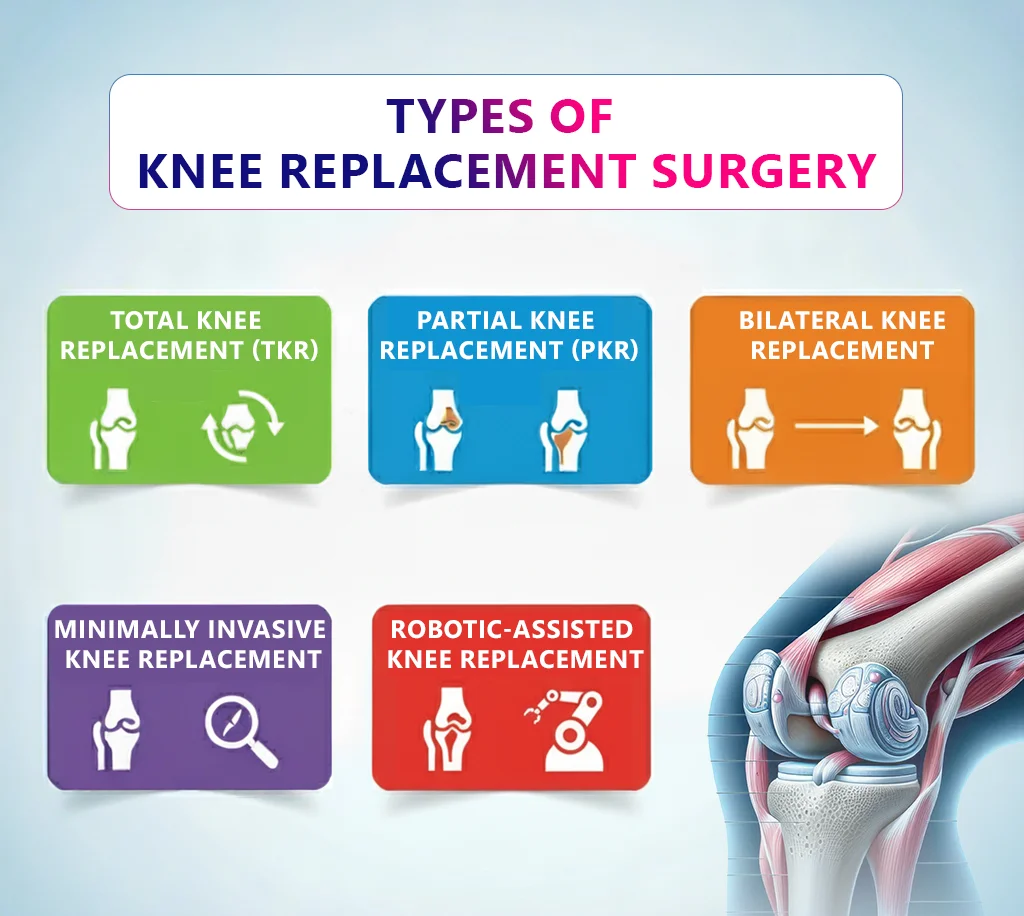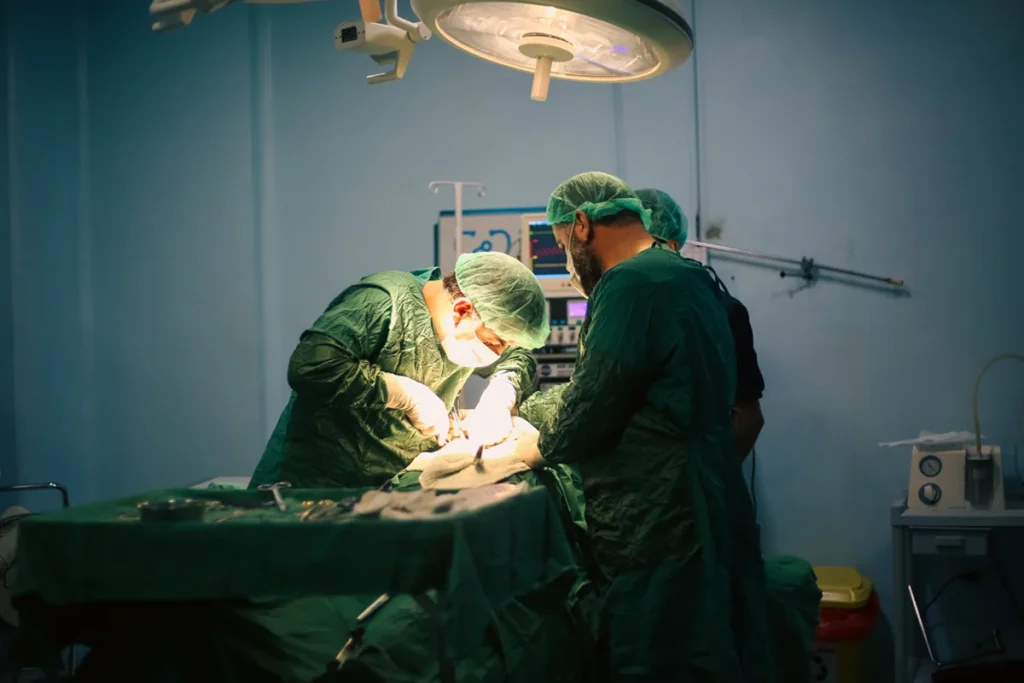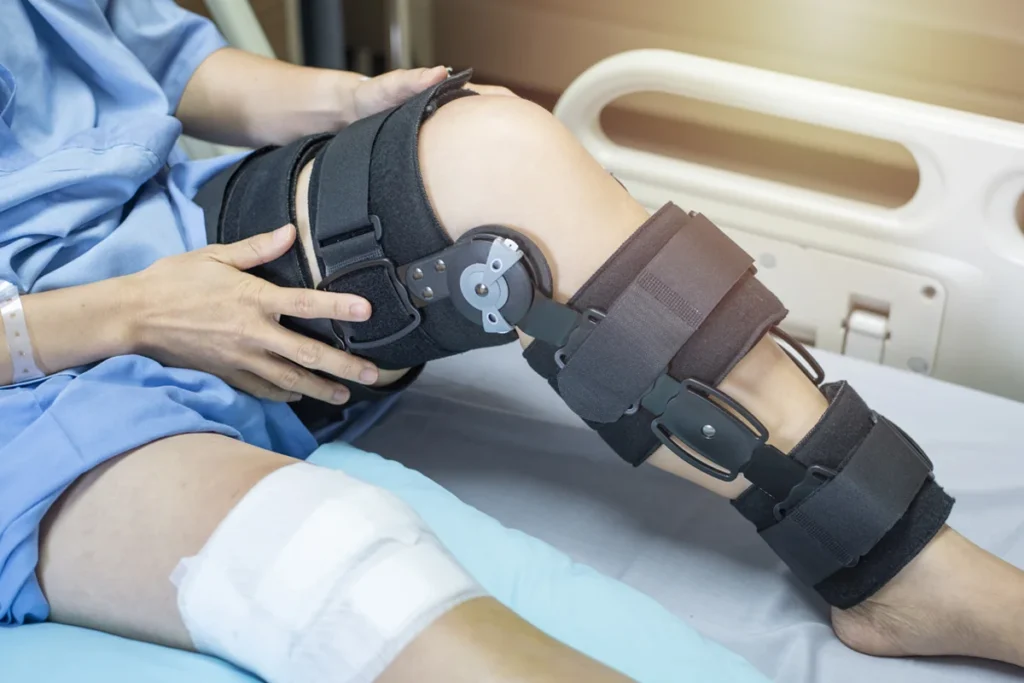Is your knee pain making even simple things like walking or climbing stairs difficult? Well, Knee replacement surgery can help you get moving comfortably again. Every year, many people pursue knee replacement to stay active and independent. With modern techniques, recovery is faster, and results are more accurate. There are many hospitals worldwide that have become a top destination for many patients. Most of the hospitals provide world-class care where surgeons are highly skilled, and the cost is much lower.
You need to know everything about Knee replacement surgery and the types of treatments that is necessary if you’re considering the surgery. Knowing about the treatments and understanding the cost should be the first step in your knee surgery. Being informed will not only help you feel confident in your decision but also prepare you for a smoother journey.
What is Knee Replacement Surgery?
If we keep it simple, knee replacement surgery is a procedure that replaces the damaged knee joint with artificial implants. This treatment is also called knee arthroplasty. It replaces damaged parts of the knee with artificial implants. As a result, movement becomes smoother and life feels more active again. This surgery is recommended for people suffering from:
- Severe Osteoarthritis
- Rheumatoid Arthritis or other joint diseases
- Knee Injuries that left permanent damage
- Mobility and chronic pain that doesn’t improve with other treatments
Why Is Knee Replacement Surgery Necessary?
Knee replacement surgery becomes necessary when the knee joint has deteriorated to the point where it is causing constant pain, stiffness, and difficulty moving. The most common reason for this surgery is osteoarthritis, a condition where the cartilage in the knee breaks down, leading to painful bone-on-bone contact. Other conditions that may require include:
- Rheumatoid arthritis
- Post-traumatic arthritis (due to a knee injury)
- Knee deformities
When these conditions cause severe pain or hinder a person’s daily activities, knee replacement surgery can provide significant relief.
Types of Knee Replacement Surgery
The types of knee replacement mostly depend on the damage. It also varies with factors such as patient age, lifestyle, and overall health. But here are some common types of knee arthroplasty that doctors mostly perform:

- Total Knee Replacement (TKR)
- Partial Knee Replacement (PKR)
- Bilateral Knee Replacement
- Minimally Invasive Knee Replacement
- Robotic-Assisted Knee Replacement
Total Knee Replacement (TKR)
One of the most common types of knee joint replacement surgery. It is usually recommended for people with severe arthritis or extensive joint damage. In this procedure, the damaged cartilage is removed and replaced with artificial implants. It is generally made of durable metal alloys and medical-grade plastic. The goal of this procedure is to reduce chronic pain and improve overall quality of life. The recovery procedure is typically followed by a rehabilitation to walk with support within days. This procedure has a record of relieving patients of their 15-20 years of pain.
Partial Knee Replacement (PKR)
It’s an alternative to total knee replacement. It is designed for patients whose damage is limited to just one part of the knee joint. This procedure is usually done by treating the affected area only. The primary focus of doctors in this procedure is to preserve as much of the patient’s natural bone as possible. As it involves less disruption to the tissues, the recovery time is usually faster and less painful. But here’s the catch: this procedure is not suited for all patients. It is best for people with arthritis who have healthy areas of the knee.
Bilateral Knee Replacement
This procedure is naturally performed where both knees are replaced during the same surgical session. This surgery is recommended for people who have a severe condition. By treating both knees at the same time, patients need to stay in the hospital slightly longer. This procedure can offer substantial pain relief and a quicker return to an active lifestyle for the appropriate people.
Minimally Invasive Knee Replacement
Minimally invasive surgery is a modern surgical procedure. The doctors use small incisions and unique techniques to repair the damaged parts of the knee joint replacement. It’s not like the traditional procedures. This procedure is famous for its less pain and faster recovery system. The procedures are usually used for both total knee replacement and partial knee replacement. As this procedure consists of smaller cuts and less disruption, patients don’t have to stay at the hospital longer. It’s a perfect surgery for those who have limited knee deformity and good health.
Robotic-Assisted Knee Replacement
Robotic-assisted knee replacement surgery is an advanced surgical technique. It’s the use of robotic technology to assist the surgeons in the knee arthroplasty procedure. A 3D model of the imaging is taken before the surgery so that surgeons can make a map of the exact placement. The robotic system guides the surgeons to ensure the positioning of the prosthetic components. This procedure results in less tissue damage and faster recovery. Robotic-assisted procedures that are primarily used in Thailand and worldwide are:
- Mako robotic knee replacement: This surgery is usually used for total and partial knee replacement. It combines 3D CT-based planning with real-time robotic guidance. It is suitable for patients with mid to late-stage osteoarthritis or knee pain and functional limitations.
- Velys robotic knee replacement: It’s an advanced surgical system that assists surgeons during the procedure. This procedure integrates real-time data to improve the surgery. If you’re looking for a personalized surgical approach, then it’s perfect for you. The eligibility of this procedure usually depends on overall health and knee condition.
- ROSA robotic knee replacement: ROSA is used for monitoring the knee. It combines the optical trackers and camera-based navigation to get real–time position. This procedure is suitable for patients who are undergoing total knee replacement. But it is recommended to consult with a doctor to be sure if it’s ideal for you or not.
How Knee Replacement Surgery is Performed

Knee replacement surgery is a carefully planned procedure. It usually takes 1-2 hours and is performed under general anesthesia. This surgery involves removing diseased cartilage and bone from the knee joint. The next procedure is replacing it with metal and plastic implants.
To restore correct alignment and movement, the knee replacement surgeon creates an incision, gets the joint ready, and installs the implants. After the wound is sealed, the patient is transferred to the recovery area. The majority of patients recover their mobility with mild rehabilitation within a day. It usually takes a few weeks to months to recover fully, depending on the surgery and the patient’s condition.
Recovery and Aftercare
After the surgery, the patient needs to spend a few days in the hospital. It is recommended to start the exercise as soon as possible so people can regain their strength and movements. The patient usually feels swelling and mild discomfort at first, but it usually improves within a few weeks. Knee replacement recovery time typically lasts a few months before getting back to normal activities. Doctors typically recommend doing exercise regularly to speed up recovery and following recovery tips.

Here’s a step-wise procedure and recovery aftercare that patients usually face:
Step 1: Hospital stay and immediate care
After the surgery, patients usually need to stay in the hospital for at least 2-5 days. During this time, doctors and nurses monitor patients closely. Patients are supported with a brace or pillow to maintain alignment. On these days, nurses usually assist patients with basic movements like sitting up in bed and walking short distances.
Step 2: Early movement and circulation exercises
Patients face gentle ankle pumps and leg stretches after 24 hours of the surgery. Depending on the condition, patients can also make movements. Early mobility is critical to prevent stiffness and promote faster recovery.
Step 3: Home care and rehabilitation routine
Once the patient is discharged, it’s essential to follow a healthy exercise program. It is recommended to use aids like canes and crutches for walking. While some patients also noticed swelling in several weeks, it is recommended to apply ice packs.
Step 4: Long-term lifestyle adjustments
Though knee replacement fully recovers in 3-6 months, some patients also face a longer time up to one year. Patients are recommended to avoid sunning and jumping during this time. Swimming, cycling, and yoga or low-impact exercises can maintain joint health.
Overall, following a healthy diet and including regular low-impact exercises in your daily life can help you recover faster. Proper care can help patients’ knee implants last at least 15-20 years longer.
Risks and Possible Complications

Knee replacement surgery is generally safe, but like other procedures, it has some risks and complications as well. There are many common issues that patients usually experience. Some of them are:
- Infection: Infection can occur in the wound or around the prosthetic knee.
- Blood clots: Blood clots are a risk, but blood-thinning medications and early mobilization can help prevent them.
- Implant failure: Over time, the prosthetic knee may wear out and need to be replaced.
- Nerve damage: In rare cases, nerves around the knee may be injured during surgery.
There are some rare cases as well, which include implants that can loosen, wear out, or cause discomfort. Other complications can include bleeding, allergic reactions, or nerve irritations. However, most of these problems can be prevented by careful monitoring and regular follow-up.
Cost of Knee Replacement Surgery
The cost can vary depending on where you live and the type of surgery performed. Getting knee replacement surgery in Thailand is cheaper than in other Western countries. That’s why Thailand is a popular destination for medical tourism. Thailand provides top-notch services at low cost and hospitable care.
The total knee replacement in Thailand usually costs around $7,000–$15,000. The partial knee replacement costs around $6,300–$7,700. The robotic knee replacement surgery is slightly higher than other traditional ones, usually costing around $18,000. If you’re thinking about doing both knees at once, then it could cost you around $26,000-$32,000.
Top Hospitals for Knee Replacement Surgery in Thailand
As Thailand combines the skills of knee replacement surgeons and advanced technologies, it has become one of the best choices for all types of patients. Thailand offers a range of specialized hospitals that offer surgery and high-quality treatment.
Here are some of the top hospitals in Thailand for knee Replacement Surgery:
- Vejthani Hospital
- Bangkok Hospital
- Samitivej Sukhumvit Hospital
- Bumrungrad International Hospital
- Yanhee Hospital
Choosing the Right Surgeon and Hospital
Choosing the right hospital is the first important step. When it comes to knee replacement surgery, you should definitely research first. Look for the specialty of the hospital and experienced surgeons, as this can make a big difference in your recovery and quality of life.
Consider treatment packages covering surgery, hospital stay, implants, and rehabilitation. Choosing hospitals offering advanced techniques like robotic knee replacement surgery can also improve accuracy and recovery outcomes.
Life After Knee Replacement

Life after knee arthroplasty can be life-changing. Most patients experience a big improvement in mobility and live without the burden of pain. Though some people say the recovery process is long, the results are worthwhile.
Partial and total knee replacement often provides 15-20 years of better mobility and quality of life. Doctors recommend low-impact activities and following knee replacement recovery tips to maintain results.
Conclusion
Knee replacement surgery is an effective solution for chronic knee pain. Most patients experience improved quality of life after surgery. Thailand offers high-quality care at affordable surgery costs, with world-class hospitality.
Knee replacement surgery not only relieves pain but also improves overall life quality. With careful planning and the right medical care, patients can confidently take steps toward a healthier and more active future.
